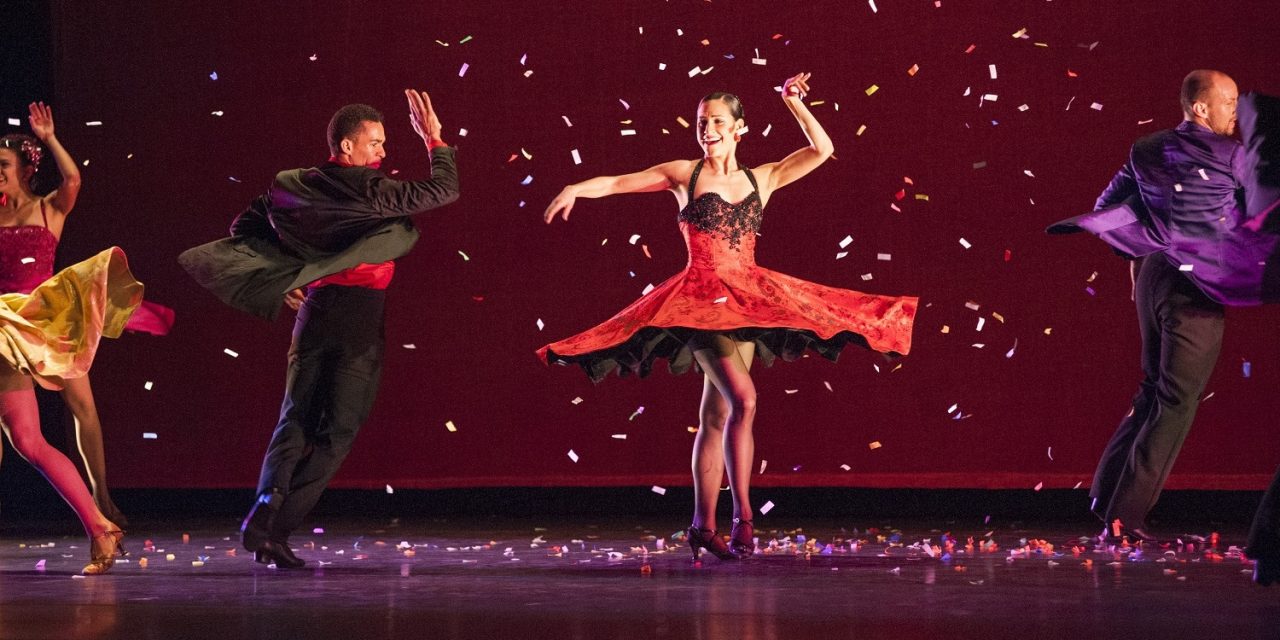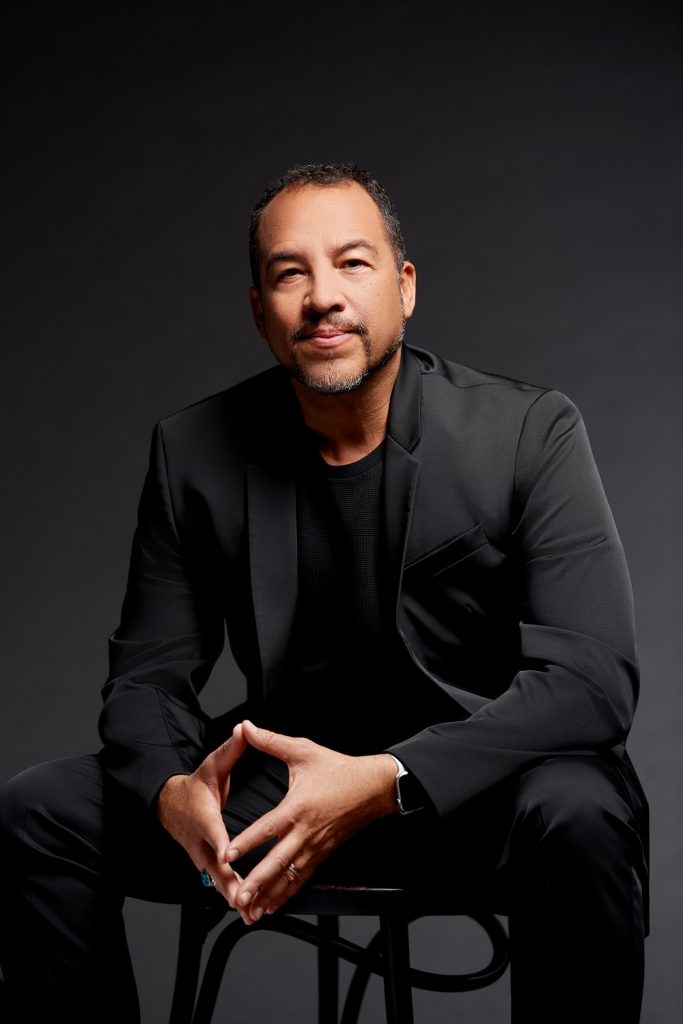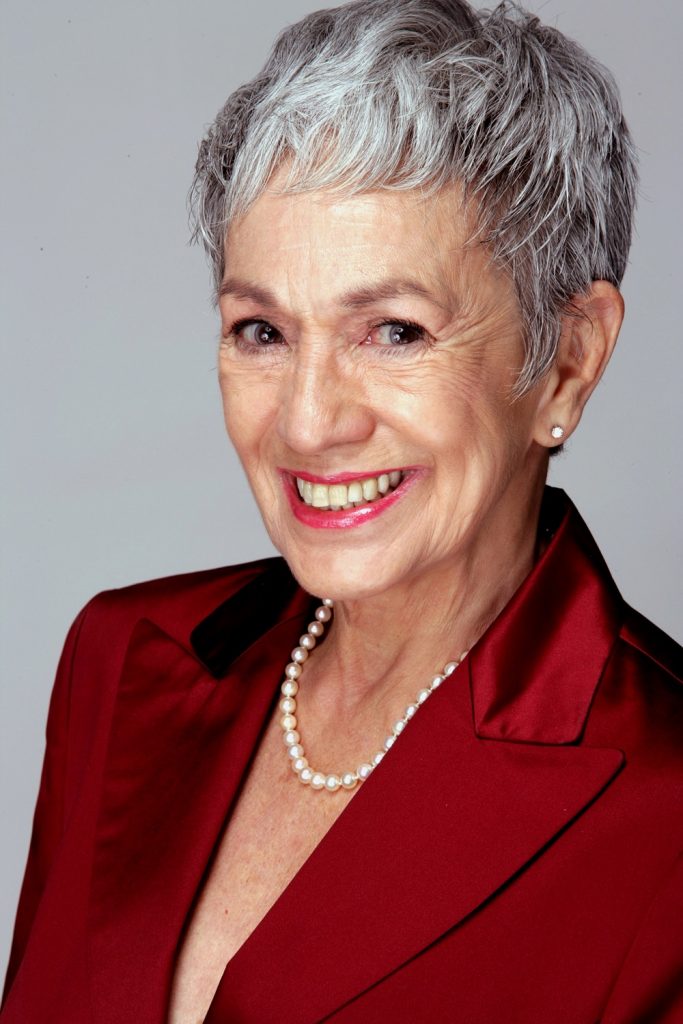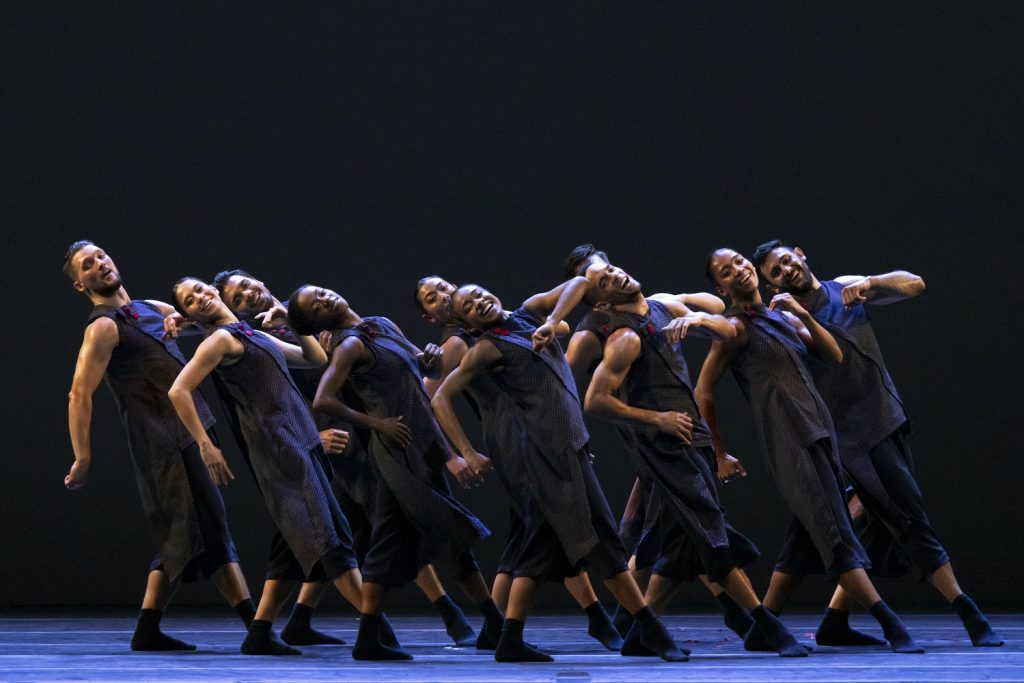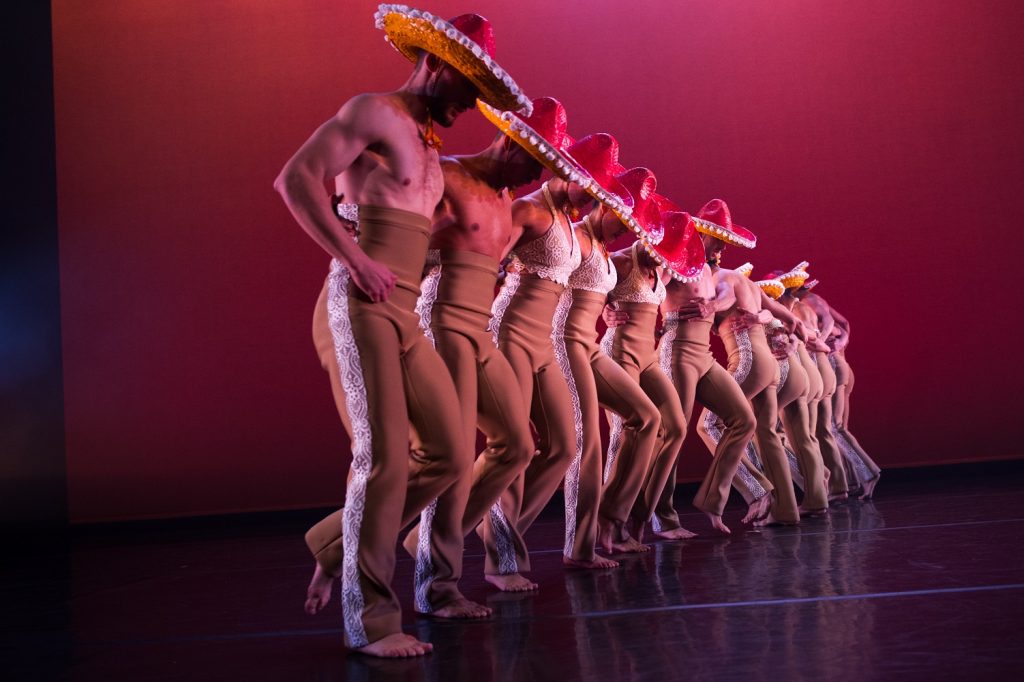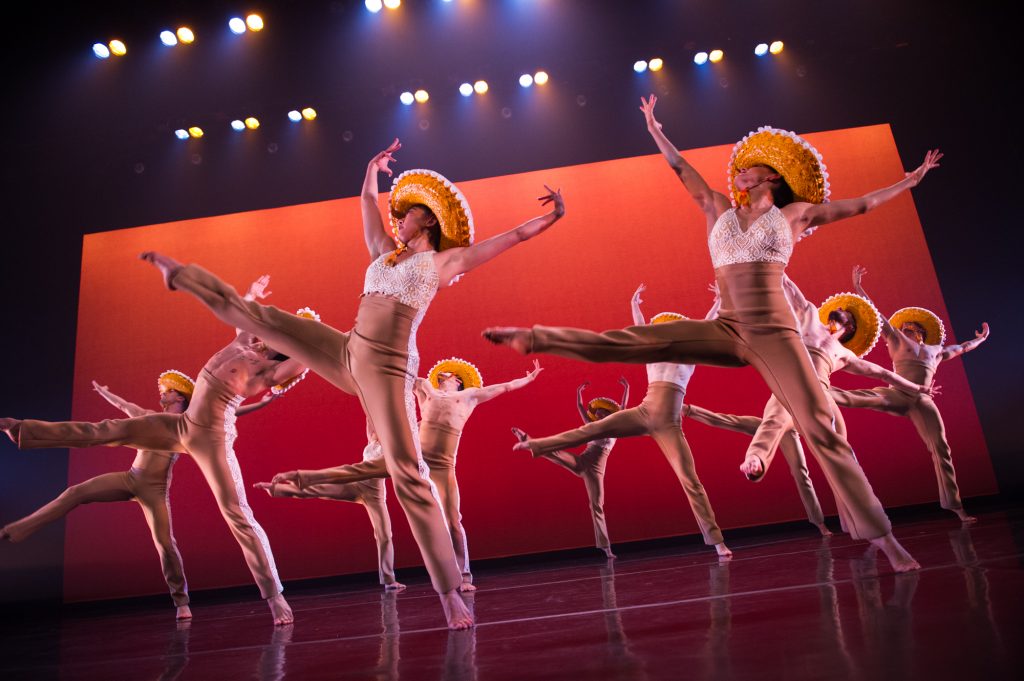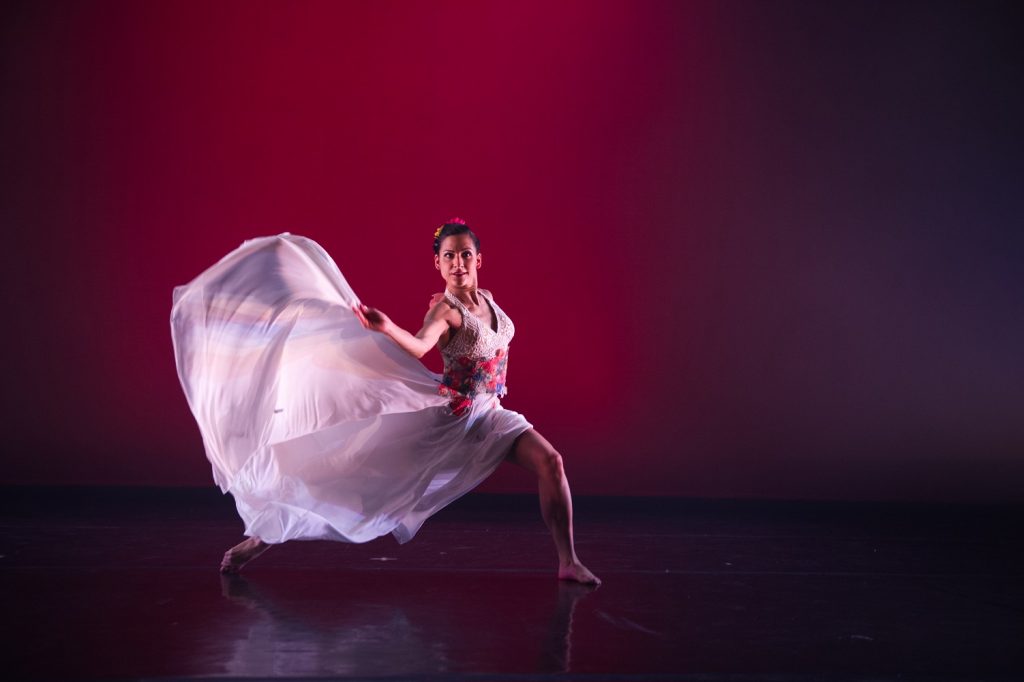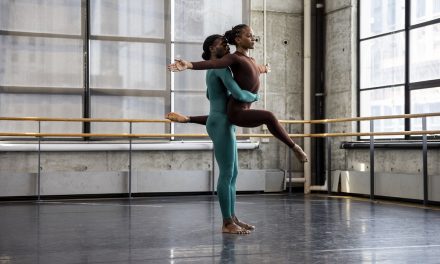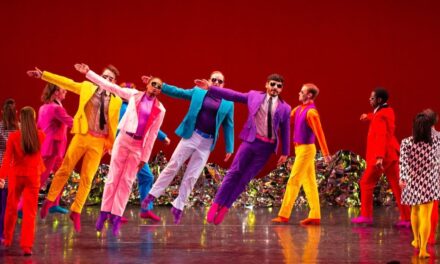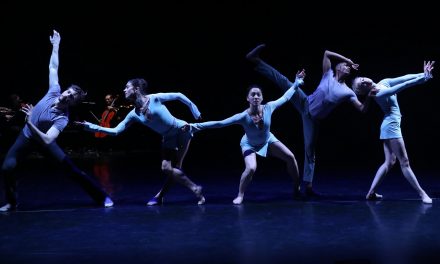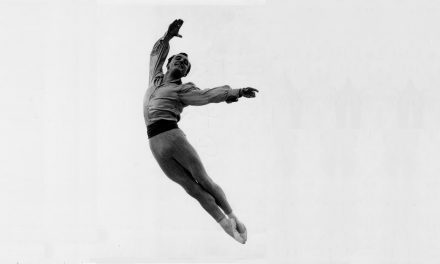On October 7-8, 2022 in celebration of their 50th Anniversary, Ballet Hispànico, a cultural treasure, will captivate audiences in their debut at The Wallis Annenberg Center for the Performing Arts. “Noche de Oro,” (The Golden Night) is a befitting title for the evening of exquisite dance. Their mission is to explore the diversity of the Latin diaspora, bringing fire and innovation to our cultural dialogue.
I had the good fortune to interview Eduardo Vilaro, Ballet Hispànico’s brilliant Artistic Director and CEO while he awaited his plane. It was a chance to give my condolences to him and the company on the passing of Ballet Hispànico’s Founder, the legendary Venezuelan born-American, Tina Ramirez. She died on September 6, 2022 shortly before our interview. He admitted it was a difficult time for them all. She was the energy and spirit of Ballet Hispànico (BH) which she founded in 1970.
Ramirez impelled it from a grassroots school into a world class institution. Because of Vilaro’s extensive connection to Ballet Hispànico and Ramirez, joining the company in 1985 as principal dancer, with a short absence to further his education and start his own company, Chicago-based, “Luna Negra Dance Theatre”; In 2006 Ramirez called him back to become the Artistic Director and CEO of Ballet Hispànico to extend and grow the company and its vision.
Having seen this company down through the years, I was very interested in hearing more of Vilaro’s vision for the future of Ballet Hispànico and the influence of Ramirez on him and the company.
JD: We’re so pleased to see you back in Los Angeles in your debut at the Wallis. Ballet Hispànico is always a bright light on the West Coast roster of dance companies, but you are not new to L.A. Tell me more.
EV: Yes, celebrating our 50th Anniversary at the Wallis is very exciting for us. And you know it’s an interesting thing, we’ve had a long-term relationship in the L.A. area. Our engagement in educational workshops like Torres High School in East L.A. is one of our most fruitful. It’s important for our company, as the largest Latinx dance organization in the nation, to continue to find ways to try to reach out and educate. In fact, we have just sent one of our dancers to do a work of ours for their school. It’s an innovative way of experiencing and sharing a cultural dialogue and of course we want to continue doing that.
Also in regard to the company coming back to L.A….I have some very exciting news for L.A’s 2024 dance season! We’re going to be at the Dorothy Chandler – Music Center. It’s going to be our version of a full-length work on the life of Evita Peron, choreography will be by Annabelle Lopez Ochoa. She did “Streetcar Named Desire” that’s why I chose her for this. It’s going to be great…You must not miss it.
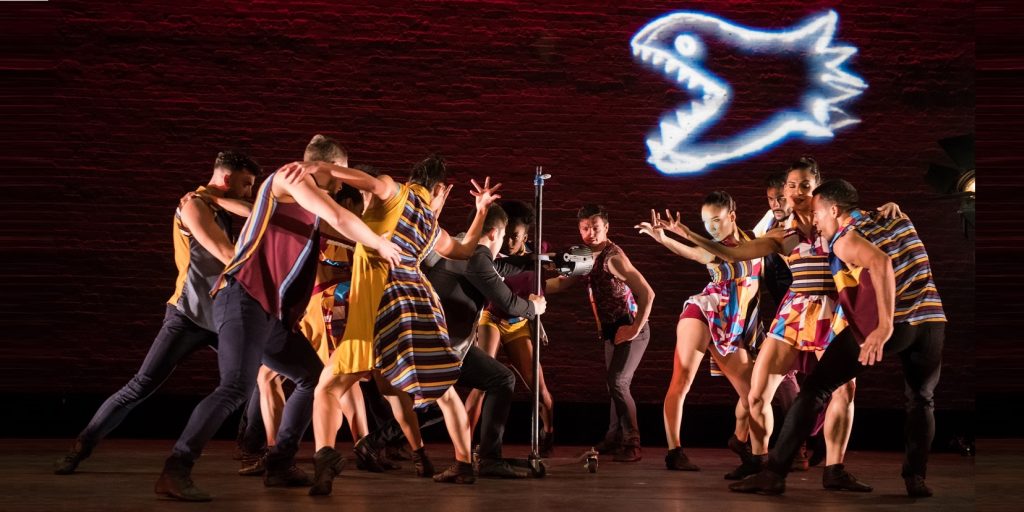
Ballet Hispánico performs “Tiburones” choreographed by Annabelle Lopez Ochoa – Photo by Paula Lobo, courtesy of The Music Center
JD: That is such exciting news! Her work is stunning. And I have to say, this brings up another point… female choreographers. They are a strong part of your company. It has become one of the signature aspects of Ballet Hispànico. Tell me more about how this happened
EV: For me, that happened way before AD of Ballet Hispànico. I was the founder of a dance company that is no longer around. It was Chicago’s Luna Negra Dance Theater. We started Project Latina there. For me, as a male director, I understand the responsibility I have to developing Latina voices which are the most underrepresented. So when I came into this company I started an All- Latina program. There was one Mexican American, one Mexican choreographer, and Annabelle who was half Colombian. So we started that program and when it toured it became very popular. It’s just a part of me… I’ve had strong Latina influences, starting with my mother…and women throughout my life. They are the strength of our community, so they must be uplifted.
And just to let you know, I think this year everything is going to be focused again on the Latina because of Tina’s passing. I’m quickly changing things to be able to offer that because she was this incredible woman, a trailblazer, in1970, at a time when women didn’t have a voice.
JD: Ah yes, she was such a strong advocate and leader for inclusion and education. Would you tell me more about that?
EV: Yes, she got people to understand that dance is for everyone. We need to develop access that allows non-verbal communication for all to revel in this art form and find out more about each other culturally. It is a cultural vehicle, and with that desire, Tina’s company was born. I think her legacy really is about her staunch advocacy for young people. For their right to have arts education, to be seen and to have their voices heard.
She actually started by trying to get work… and she succeeded which was very difficult in our country in 1970 . She wanted that, and so she strove to bring different choreographers, different techniques, and the development of young dancers to be able to excel… and they did.
JD: So the development of young people came first? Then she transitioned them into the company …and that’s when the company started?
EV: You know It’s funny, I don’t think it’s a chicken and egg thing. I think it started at the same time she took over the studio from her mentor, Lola Bravo, and she started teaching those kids and started to realize how much more she could do with them. They got so proficient at their art form that she said, I’m just going to develop a company… and they started performing everywhere.
They had a truck that took them places. They were at block parties and outdoor festivals and, all of a sudden, they developed even further. I joined in 1985 and it was, at that time, when the company really took off as a professional dance company.
JD: So your mission is to innovate and share cultural dialogue. How do you guide the freedom and advocacy to do that? Is it just by example…is it by proselytizing?…
EV: You know I don’t think art is ever about proselytizing. Perhaps sometimes it is… but I don’t take that approach. I take the approach as if it’s an open dialogue. So when a choreographer comes to me and says, I really want to talk about this… I say, How are you going to do that?
It’s a matter of always finding a way to invite people in, not push them away. This is not just about a singular culture. We’re not monolithic. The thing about being Latinx is that there’s twenty-one nations. We look like everyone in the world. Right? In terms of skin tone, language, everything. So it’s a really careful balance, and I always seek those artists who really understand that they want to bring people into the conversation instead of excluding them from the conversation.
JD: It must be a wonderful environment to work in, because it feels …. kindly.
EV: you know. I just don’t think there’s any room for anything else but kindness. In particular in today’s world. If you could just stop for a minute… sure you can have a dialogue about anything you want…anyone can believe whatever they want. You’re just a little bit more respectful. I think that’s important in an art form when you’re in the theater, when you have a captive audience
JD: Incredible! If you could describe Ballet Hispànico in three words, what would those be?
EV: Innovative, Dance, Programming.
JD: Tell me about programming. How difficult is that?
EV: It’s not difficult. You just need a crazy man to say we’re gonna do this, and then the staff goes… OH my God!
JD: (laughs) Do they just follow along, or rebel?
EV: There’s a method to my madness, you know. I think it’s about… If you develop programming that is egoless and community-based, people understand that.
Also, developing scholarship programs. We started Project Latina developing Latina voices. Free scholarships for specific groups that are really needing it. There are smaller ways you shift your engagement programming to more breadth, so we went from just teaching in inner city schools, or when we’re on tour, taking chances and going into prisons and working with incarcerated youth. I took four dancers and myself, and we spent a week in Houston in one of their facilities. Also, we go into disabled communities, and work there as well. You have to start pushing your edges. We’re not professional therapists, we’re not service people but we understand how to bring a highly communicative art form to the community. It’s like learning another language.
JD: Difficult but rewarding and hopefully life changing.
My next question: we’re just starting to breathe again. Most things, restaurants, theaters, everything seems to be flowering and coming back. What I’ve noticed is Ballet Hispànico seemed to come back even stronger than before, so I was curious how the company continued to develop through the pandemic.
EV: We nearly killed ourselves, or rather they nearly killed their Artistic Director. We built a virtual platform that was huge. We understood…our leaders, managers… that are fantastic, understand that our community could not be left behind. We have families that come to us every year and over 1,000 kids are served. We have programs every summer…so we understood that we could not detach from their lives. We had to step in a little further. So we did.
All those months every day there was a program. “Take back Tuesdays,” you could take a class, Wednesdays you can sit and learn about the history of the company and watch a video. And I would invite people online to do interactive. You know, “Therapy Thursdays” for yoga classes or meditation. “Fabulous Fridays” where anything goes. We even invite a special guest star. We cut up Marley floors into little squares and sent them to our top students so they could continue to take class and hone their bodies.
It was fun, exhausting, revelatory and we tripled our social media audience. We had two fundraisers that did better than any fundraiser we’ve ever had. So, right now we’re trying to see how we harness and continue that power, although you know the thing about performance is that you have to be there, you have to sit in the theater. But how can we find other ways also to continue. I have some thoughts on that, and you’ll hear more about that at some point when we unveil all that.
JD: So great!
JD: With the West Coast potential to be a possible second home is of course our wish. And it is a bit of a second home. What do you see as the shape of your school and company in five years?
EV: I think collaboration is going to be important, so that we’re not building satellites. We’re building long-term relationships with cities that need us whether it’s in the form of higher education or the University, or whether it’s a theater that says, You know what…We want you in Residency here, what’s the programming like?
Of course it’s difficult, because LA has its own dance companies. You don’t want to slight anybody. I’m very much of the mind that maybe one year it’s performing, then in the next year it’s a residency with kids, or something. So it’s really very different than just the performance mind that we have in common. Ballet Hispànico is going to have to find the right secret sauce for making that possible, because really there is nothing like Ballet Hispànico on the West Coast. Why not have us come over more, or why not in Houston or in… You know, there are many places. We actually have a really beautiful relationship in, of all places, New Orleans. We’re there every other year and that again is also a very long-term relationship that we’ve had because of education. They have an engagement outreach that goes out into the different Wards and brings children in for teaching, and we’re a part of that teaching community. So yeah, I think if we can all just start thinking outside of the box it will work.
JD: not only for Hispanic marketing, it pulls everyone together … I don’t know exactly how you do that…
EV: One small dancer at a time.
JD: Yes, well, you have a formula that needs to be shared. I thank you so much for taking time, in an airport no less, to fill us in on what’s going on. I can’t wait to see Ballet Hispànico in October. Any additional thoughts you’d like to share?
EV: Well, just that I think Ballet Hispànico will continue to be as innovative as possible and bring new narratives and voices of artists to as many places that need this kind of work.
JD: Thank you so much. All the best to you and the Company,
EV: Thank you.
“Ballet Hispànico’s” explosive and innovative “Noche de Oro,” performs on October 7-8, 2022 in celebration of their 50th Anniversary, at The Wallis Annenberg Center for the Performing Arts. 9390 N Santa Monica Blvd, Beverly Hills, CA 90210, Beverly Hills, CA 90210, Tel: (310) 746-4000
To purchase tickets, please click HERE.
To learn more about Ballet Hispànico, please visit their website.
To find out more about The Wallis Annenberg Center for the Arts, please visit their website.
Written by Joanne DiVito for LA Dance Chronicle.
Featured image: Ballet Hispánico Dancers Lyvan Verdecia and Melissa Verdecia (center) in “Club Havana” – photo by Hayim Heron

